How to Make Money Farming 5 Acres or Less [Not Just Market Gardening!]
Welcome! This article contains affiliate links, meaning I get a commission if you decide to make a purchase through my links, at no extra cost to you.
The number of traditional farms is dropping fast. Land is expensive and can be hard to find. But what if you dream of making an income off a small farm? Micro-farms are becoming popular sources of income, and it’s pretty incredible how much money you can make farming 5 acres of land or less.
To make money on a small farm with 5 acres or less of land, you’ll have to figure out what’s profitable, find a space to work in, make a comprehensive business plan, and start small. Small farms can pull in a liveable salary, but only if you plan them properly.
Let’s look at some of the best ways to make money when you only have a small farm of 5 acres or less to work with.
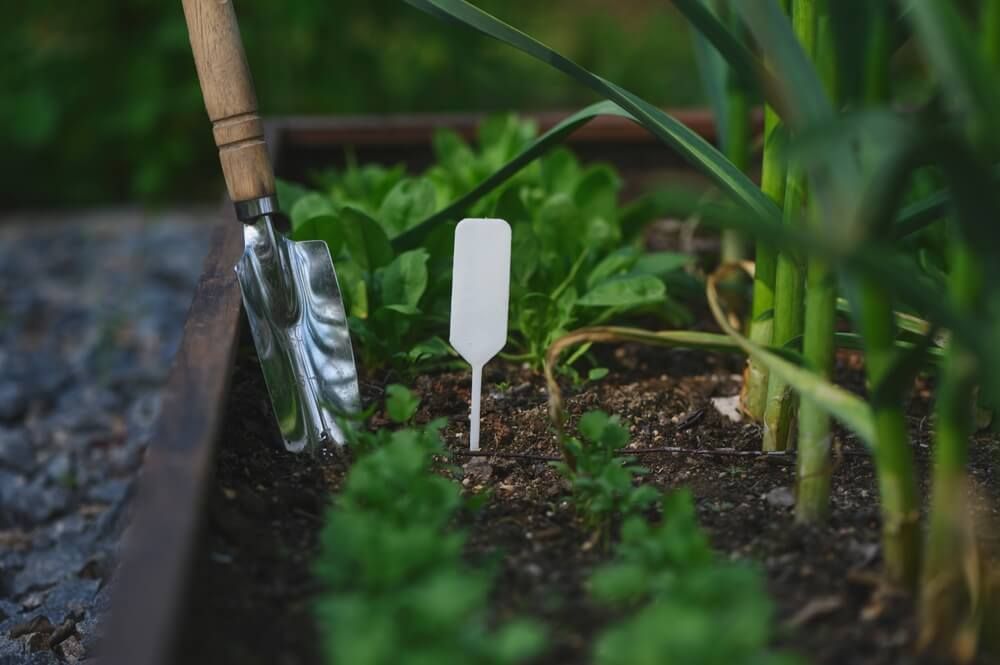
We’ll discuss some things to remember during the planning phase, list the best crops to grow on under 5 acres of land, and share some ideas to help you make a regular income from your small farm.
We’ll also share some small-scale farming success stories with you for inspiration! So, let’s get this show on the road and make the best of your limited space.
Ways to Make Money on Small Acreage Farms and Homesteads
Curtis Stone, also known as the Urban Farmer, believes you can make money farming 5 acres or less.
On his website, he offers advice, classes, and video tutorials on how to do just that. He says you don’t even need to own the land you farm; you can lease or rent a little plot of land to start your own micro-farm.
Still, it takes more than some garden space to start seeing profits. Here are a few essential things you’ll need to make money on your farm in addition to the actual land itself:
1. You Need a Great Crop to Grow and Sell

If you want to make a decent income from your small farm, you need to have some ideas about what kind of high-value crop to sell.
You can choose from tons of different things, from eggs to mushrooms. However, some things are easier and quicker to produce than others, which often leads to higher profits.
For Curtis Stone, the most profitable crop is usually microgreens. Microgreens take up very little space, have a high value, and have a quick turnover since they grow quickly.
But there are plenty of other choices, from salad greens to worm castings, meat chickens, and even snails.
Of course, you’ll want to learn as much as you can about the specialty crops you are going to sell. If you already have something you are great at growing, you’re off to a good start.
But you need to think like a business and grow what you can sell.
If no one in your area wants to eat rutabaga, then growing 5 acres of it isn’t going to pay your bills nor provide you with a full-time income. It will just make you really tired of eating all that unsold rutabaga!
By the way, rutabaga is great animal fodder, so if you can’t eat it, your animals will!
You may want to ask around your community and do a little solid research before you get started so you can find out what people might need you to grow.
Don’t miss this series about people who are giving up their day jobs to become first-time farmers; we can learn a lot from this:
My Dream Farm follows first-time farmers as they give up their ordinary, urban lives to live off the land. Writer, broadcaster, and farmer, Monty Don, mentors the new farmers as they face steep learning curves.
2. You Need Steady Customers to Buy Your Product
There are many different ways to find steady customers. For example, as a grower, you might sell to gourmet restaurants, create or join a CSA, market to or employ friends and family, sell at farmers’ markets, or even start a roadside vegetable stand.
Customers are key to growing your small farms business because you won’t earn any money without them. It helps if you are a warm, friendly person who is active in your community because you need to talk to everyone around you about your small farm.
Read More – 57+ Best Careers for Off-Grid Living!
3. Other Things to Think About
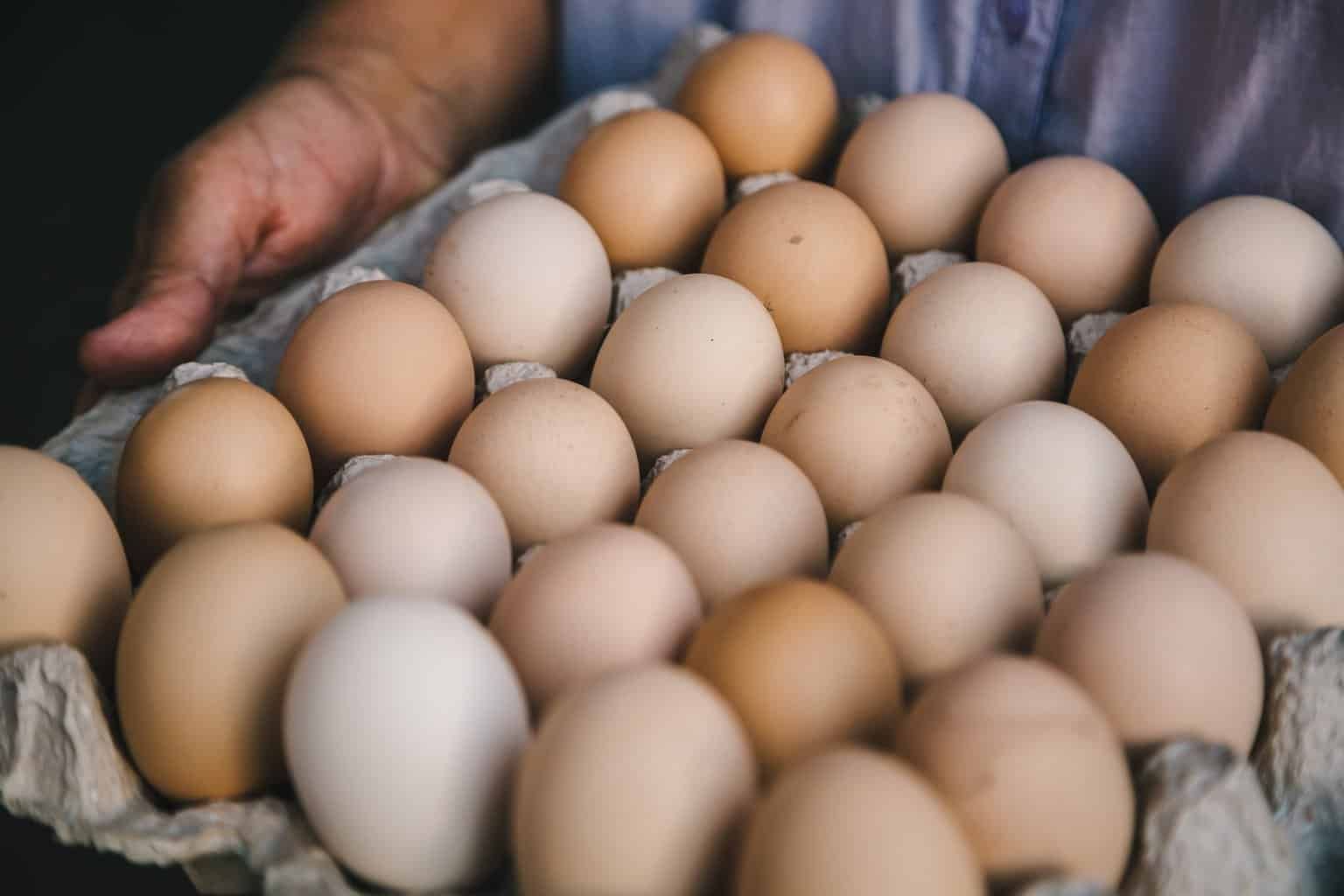
You may also want to sit down and make a formal business plan so you have something to follow and track your progress. Otherwise, your ideas might not pan out, and you may not end up making a decent income from your small farm.
Some expected expenses to keep in mind include:
- You may need packaging for your product, such as egg cartons.
- Or perhaps you need a place to store your product, such as coolers.
- You may need a vehicle to deliver your crops to your customers unless your customers are coming to you.
- If you are raising animals or livestock, you’ll need to find ways to feed them, house them, and manage their manure.
Business plans can be very useful for growers. It’ll give you a clear idea of your income stream and helps you think about things like marketing, equipment, and the long-term plan.
4. Start Small
This book will show you how to produce 85 percent of an average family’s food on just a quarter acre—and earn $10,000 in cash annually while spending less than half the time that an ordinary job would require.
Even if you have never been a farmer or a gardener, this book covers everything you need to know to get started: buying and saving seeds, starting seedlings, establishing raised beds, soil fertility practices, composting, dealing with pest and disease problems, crop rotation, farm planning, and much more.
It might be tempting to quit your day job and start living off the land. However, unless you are independently wealthy, you’ll probably need to keep working while you get your small farm going.
So, just start small.
Start a market garden in your existing garden first. Start selling the fruits of your existing trees before planting 5 acres. It’s easier to make a living when you use what you have!
Once you are making a small income, you can add more. Grow more food, add another market garden, add another kind of crop. Give it time, and don’t be intimidated by what others have done or are doing around you.
You’ll have more success if you start small and build until your farm is making money rather than if you throw caution to the wind and go whole hog, so to speak.
The Best Profitable Crops To Grow on 5 Acres or Less
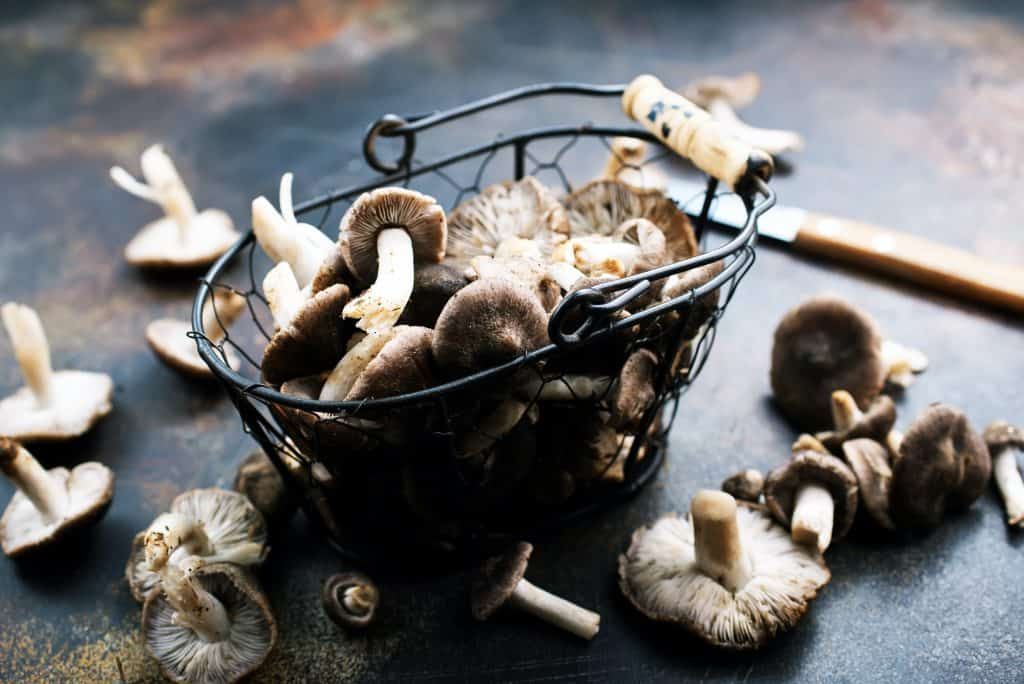
If you’re looking for ideas to make a great income from a small farm, you’ll likely want to start by selecting the best crop or other produce to grow on your 5 acres of land.
While this task can seem daunting, following the chain of supply and demand is always a safe bet.
Some of the best crops and animal products that are profitable, in high demand, and don’t require much space include:
1. Microgreens
| Approximate Selling Price | $50 per lb |
| Approximate Cost of Production | $2 to $7 for enough seeds/water/soil/electricity to grow 1 lb of microgreens |
| Estimated Profit | $48 to $43 per lb |
Microgreens are the best crop to grow on a small farm of 5 acres or less because they need very little space, have a quick turnaround, and have a high cash value.
As far as produce farming goes, microgreens are very easy to grow and market. They look great displayed at farmers’ markets, too!
Microgreens have the potential to be the next world health craze, and you can take advantage while they’re still relatively unknown – no matter where in the world you live.
Not only that, you’ll be able to cash in on the craze, using the business start-up advice and top tips from Donny Greens, the founder of a Microgreen business in New York that makes $8,000 per month in gross income.
2. Salad Greens
| Approximate Selling Price | $2.15 to $3.18 per lb of loose salad greens |
| Approximate Cost of Production | One seed (costs less than one cent) |
| Estimated Profit | $2.14 to $3.17 per lb of loose salad greens |
Salad greens are easy to grow and have a fast turnover. Pound for pound, they are a high-value crop. Additionally, demand is really high, as people love salad greens and eat them regularly. For that reason, they’re one of the easier vegetable crops to market.
3. Garlic
| Approximate Selling Price | $2.00 to $7.00 per bulb |
| Approximate Cost of Production | $0.19 to $0.23 per bulb |
| Estimated Profit | $1.81 to $6.77 per bulb |
One of the easiest, most profitable crops to grow is garlic, especially gourmet garlic.
If you plant just 50 pounds of garlic bulbs, you should be able to harvest between 400 and 500 pounds, according to Profitable Plants Digest. That’s a great opportunity for a homestead income.
The first garlic book written specifically for organic gardeners and small-scale farmers!
Growing Great Garlic is the definitive grower's guide written by a small-scale farmer who makes his living growing over 200 strains of garlic. Commercial growers will want to consult this book regularly.
4. Worm Castings and Tea
Worm castings are basically worm manure. This is a high-quality, all-natural fertilizer that gardeners love. So, if you produce worm castings, you are, in effect, a worm grower!
You can easily start a worm farm in your basement or spare room with a few bins. A good worm farm is never smelly, and worms don’t make any noise.
You can feed them all your leftover food scraps and garden produce, so they’re excellent for recycling, too. Worm castings are a great way to make a living.
5. Black Soldier Fly Larvae
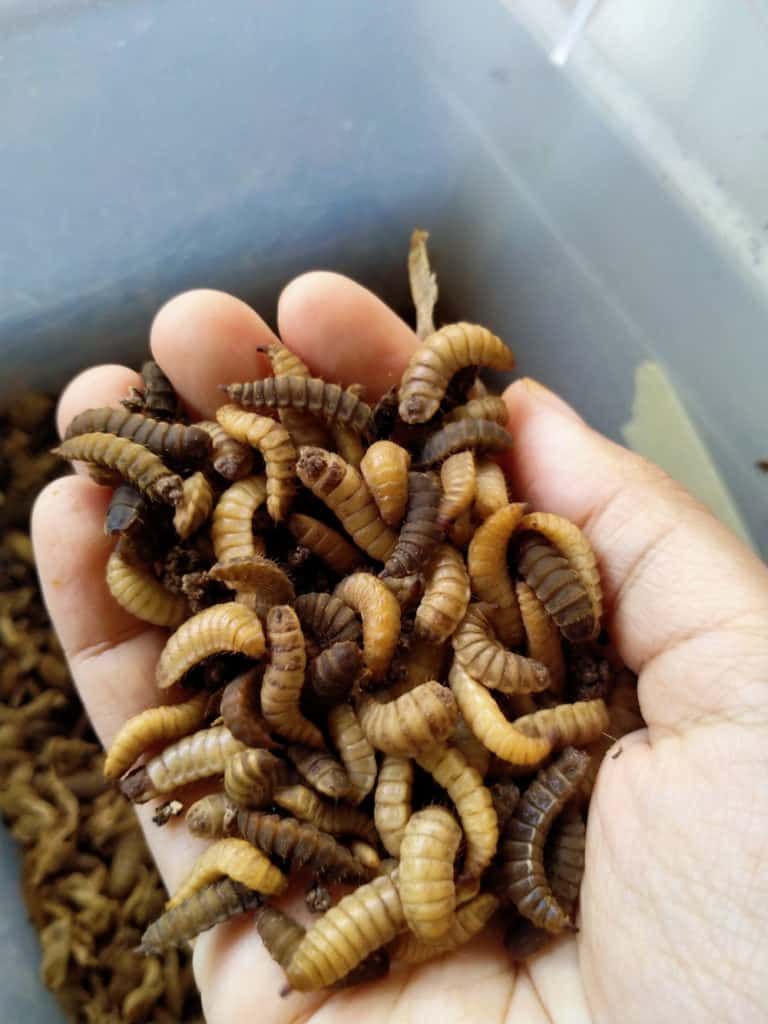
| Approximate Selling Price | $4.00 to $12.00 per 100 Black Soldier Fly larvae |
| Approximate Cost of Production | $12.39 per 100 Black Soldier Fly larvae, including startup costs |
| Monthly Costs of Feeding | $2.10 per 100 larvae |
| Estimated Profit in 1st Month | $ -8.39 to $0.39 per 100 larvae |
| Estimated Monthly Profit after 1st Month | $1.90 to $10.10 per 100 larvae |
One of my friends recently showed me his aquaponics greenhouse and incidentally, we wandered past an interesting setup that looked a bit like a worm farm bin.
When I asked him about it, he explained that he is farming Black Soldier Fly larvae to feed his chickens.
Brilliant!
Our family’s aim has always been complete self-sufficiency. One problem we keep coming across is how to be fully self-sufficient in the way of feeding animals. A Black Soldier Fly larvae farm could well be the answer to feeding many of your meat-eating animals like chickens and pigs!
And not just that. Selling Black Soldier Fly Larvae is also surprisingly profitable!
Here are:
- Some interesting facts about Black Soldier Fly production,
- information on how insect-based chicken food can benefit farmers and the environment,
- a SARE report on raising Black Soldier Fly larvae as chicken feed in a tropical region,
- a report on the profitability potential of Black Soldier Fly larvae raised on pig manure at farm level,
- and a useful video to see how easy it is to get started!
6. Become a Market Gardener
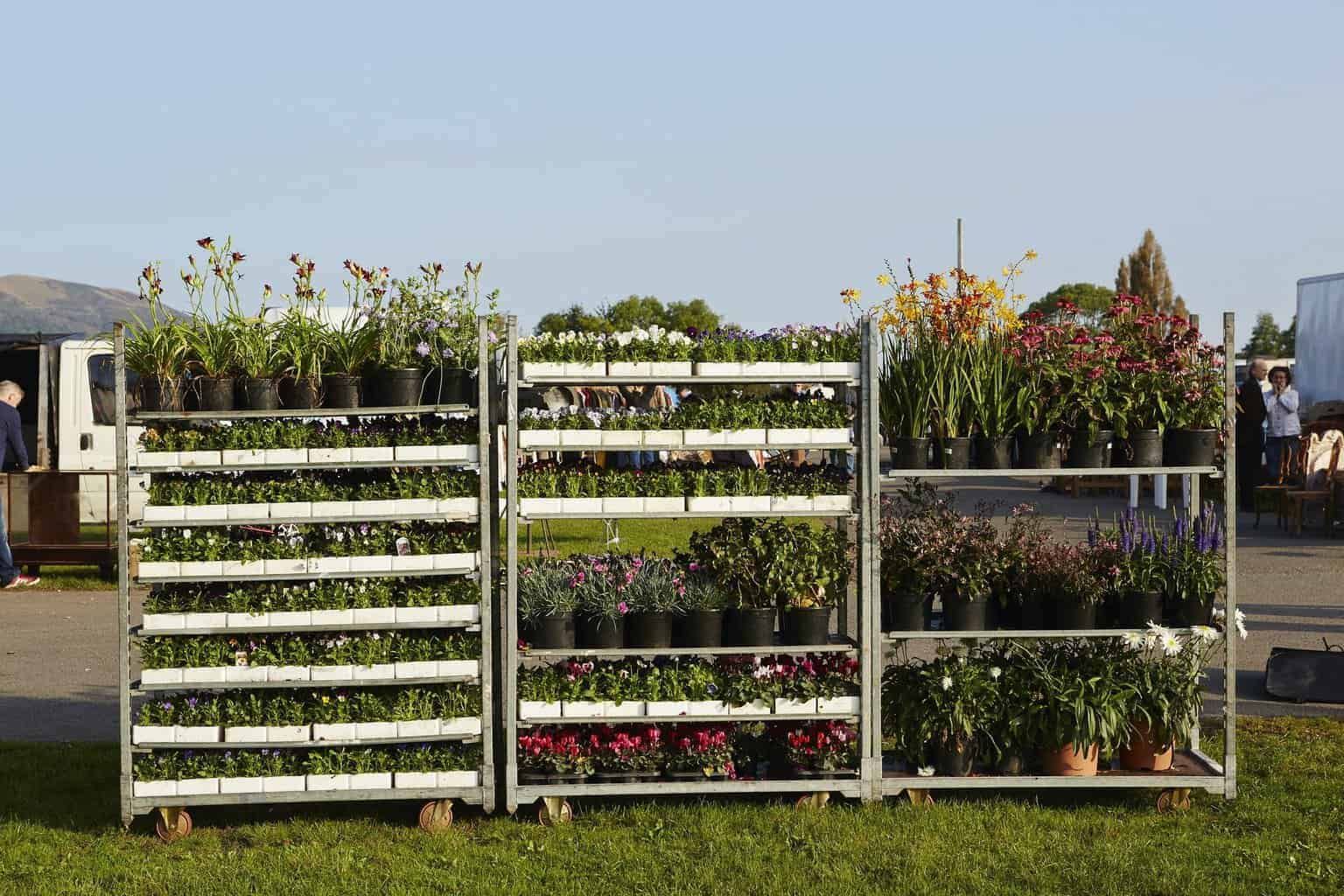
A market gardener is someone who grows crops on a farm, usually on a small scale. A market gardener can grow a variety of different fruits, vegetables, herbs, and flowers. They then market them to the public or to commercial places like restaurants.
This type of garden is great for homesteading because you only need a tiny area. Market gardening is a lot of work, but it’s also very rewarding. Sales can be impressive from even the smallest garden.
Gardeners working on 2.5 acres or less will find this book especially useful, as it offers proof that small-scale market growers and serious home gardeners can live good lives close to the land and make a profit at the same time.
The New Organic Grower is ideal for young farmers just getting started, or gardeners seeking to expand into a more productive enterprise.
7. Mushrooms
| Approximate Selling Price | $6 to $10 per pound |
| Approximate Cost of Production | $3 to $5 per pound |
| Estimated Profit | $3 to $5 per pound |
Mushroom farming is a bit more complicated than other crops but can be done in a small space.
Mushrooms fetch great prices, and you can grow them on a quarter acre or less. They’ll even crop up in a barn! They are some of the best homesteading plants to grow since you don’t even need a garden!
You can even grow mushrooms without dirt inside your home.
In recent years, demand for gourmet mushrooms has skyrocketed, creating opportunities for new growers. The most profitable culinary mushrooms are shiitake and oyster mushrooms.
Using the “grow bag” method, experienced growers can grow 12,000 pounds of gourmet mushrooms in a 500 square foot space every year. At current prices of $6/pound wholesale and $10/pound retail - well, I’ll let you do the math.
8. Ginseng
| Approximate Selling Price | $300-$700 per pound |
| Approximate Cost of Production | $2 to $3 for labor, seeds, and soil per 1 lb harvested ginseng |
| Estimated Profit | $298 to $697 per 1 lb of ginseng |
It might be tough to find a plant to grow in the woods. However, ginseng is one of the best, most profitable crops you can grow on 5 acres or less of farmland.
Ginseng loves growing under hardwood trees. Not many people grow Ginseng plants, but it’s one of the more profitable specialty crops. You can find more information at Mother Earth News and the wonderful book below.
In this fully revised and updated edition, the authors show how more than a dozen sought-after native species can generate a greater profit on a rugged, otherwise idle woodlot than just about any other legal crop on an equal area of cleared land.
With little capital investment but plenty of sweat equity, patience, and common sense, small landowners can preserve and enhance their treed space while simultaneously earning supplemental income.
9. Bamboo
| Approximate Selling Price | $60,000 a year from a quarter acre. |
| Approximate Cost of Production | varies depending on how many plants you start with and how patient you are. It’s possible to start with one free shoot or up to $72,000 worth of densely planted young shoots. Patience is key with this crop. |
| Estimated Profit | $60,000 a year per quarter acre when grown from one propagated shoot |
Bamboo is growing in popularity, and if you live in a warmer climate, you can make $60,000 a year in bamboo profits on just a quarter acre of land.
While bamboo doesn’t produce fruits, you can sell the shoots as food, and bamboo wood fetches a good price. Find out more about raising bamboo trees for a homesteading income.
10. Quail
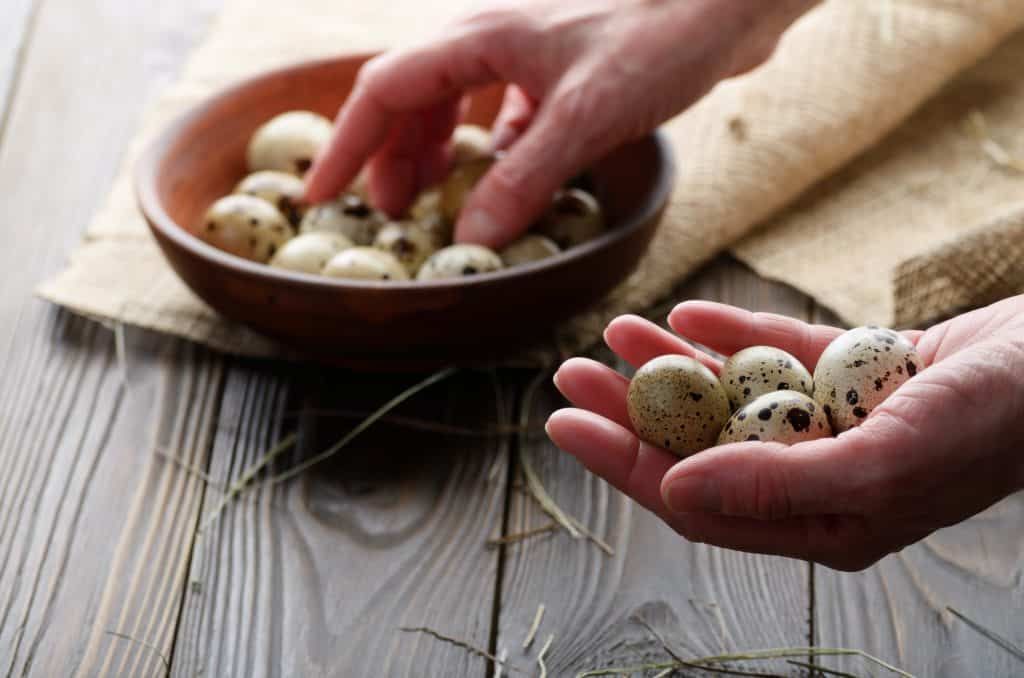
Quail can make a great income on a five-acre homestead. They take up very little space, have a great feed-to-egg conversion ratio, reproduce and grow quickly, and are not nearly as regulated as chickens. You can raise them for both meat and eggs.
Read More – Homesteader’s Guide to Farming Quail
11. Broiler Chickens
Organic or pasture-raised broiler chickens can also turn a tidy profit on a homestead with less than 5 acres to work with.
With a chicken tractor, you can move the coop around each day to offer your flock fresh grass. You can also move them around the garden while they grow to help you with weeding and controlling garden pests.
Broiler chickens grow quickly, so you’ll be able to raise, butcher, and sell them fast.
Read More – Raising Pheasants vs Chickens For Profit on Your Homestead
The most comprehensive guide to date on raising all-natural poultry for the small-scale farmer, homesteader, and professional grower. The Small-Scale Poultry Flock offers a practical and integrative model for working with chickens and other domestic fowl, based entirely on natural systems.
What Is the Most Profitable Crop per Acre?
To make a good living, it really helps to grow the most profitable crop per acre. Here are some of the most profitable crops per acre and their current market value:
- Saffron. Modern Farmer states that Saffron is worth $5000 to $10000 per pound.
- Ginseng. See above. $300-$700 per pound.
- Truffles. Black truffles yield $95 per ounce and white truffles $168 per ounce.
- Bamboo. $60000 a year from a quarter acre.
- Sandalwood. Approximately $200 per kg.
How Much Do Farmers Make – Real Life Examples
It’s hard to say how much a newbie farmer can make from a 5-acre farm production.
After all, you need to consider up-front costs for things like land, soil, seeds, animals, fertilizers, construction, and irrigation systems – I could keep listing things, but you get the point. A lot goes into starting a farm, no matter how small it may be.
However, there are plenty of success stories to give you an idea of what is possible. Here are just a few different examples of small farms that turn great profits:
1. The Urban Farmer
Curtis Stone says you can make a gross income of $100,000 a year farming just ¼ of an acre of land. You don’t even have to live in the country – you can be a market gardener from your home, in your backyard, or from an empty lot.
While that massive figure isn’t the total profit, which will, admittedly, be smaller, upfront costs are a one-time investment. Additionally, with such a small-scale farm, you can expect to break even after around two months of production.
Curtis Stone does his best to help hopeful farmers realize this gross income on their land, publishing tons of fantastic resources like this book:
The Urban Farmer is a comprehensive, hands-on, practical manual to help you learn the techniques and business strategies you need to make a good living growing high-yield, high-value crops right in your own backyard (or someone else's).
2. ESI Money
ESI Money talks about making a side hustle from your hobby farm as a market gardener.
They claim that a commercial greenhouse that is 8 feet by 40 feet can produce a gross income of up to $3,700 each month, depending on what plants you grow and sell. ESI specifies that to reach these peak production levels, the greenhouse will likely cost a bit of money, totaling a one-time investment of at least $60K. However, with such high income margins, you could easily pay off that investment within a year.
More information on that here.
3. The Rockstar Gardener
J.M. Fortier, the “Rockstar gardener,” is known for his highly profitable plant micro-farm in Quebec, Canada.
He aims for $100,000 per acre in gross income with his market gardener small farm business. This is his website.
Fortier’s book, listed below, has gotten a lot of international attention for its straightforward and simple approach to profitable small-scale farming. Using this book, tons of people have been able to make a lot of money from farming on 5 acres or less.
For example, using Fortier’s methods, Two Roots farm in Colorado made approximately $75,000 in their first year of production. For context, Two Roots farm is just 1/2 acre. Incredible!
Making a living wage farming without big capital outlay or acreages may be closer than you think. Growing on just 1.5 acres, Jean-Martin and Maude-Helene feed more than 200 families through their thriving CSA and seasonal market stands.
The secret of their success is the low-tech, high-yield production methods they've developed by focusing on growing better rather than growing bigger, making their operation more lucrative and viable in the process.
4. New Terra Farm
The owners of this little market gardener farm, known as New Terra Farm, brings in a cool $50,000 per acre in gross profits. If you want to know how they did it, they’ve documented all their farm plans and lists of materials and tools they used. You can check it out here.
5. Joel Salatin
PolyFace farms, created by Joel Salatin, is a firm believer in pastured poultry. Joe started out his agricultural career by raising broiler chickens in his backyard. For the first few months, the budget was tight. However, as he pursued his passions, the profits sure poured in!
Starting out on under an acre, Salatin began to make $25,000 in profits on 20 acres in 6 months. However, Joe just kept growing his farms as time went on, and he now has a 2,000-acre farm that pulls in proceeds of around $2 million a year.
PolyFace farms uses many techniques to make the most of a small property. Find their stories here: https://www.polyfacefarms.com.
6. Lush Plants Nursery

This is our former business, and I couldn’t help but include it here because it would be a great little business for many of you.
We propagated ornamental plants and fruit trees and sold them via our website to customers country-wide. Propagating your own plants is incredibly cost-effective.
We particularly loved propagating plants you can divide (plants with rhizomes or dividable root systems), such as Canna, Gingers, Heliconias, several herb varieties, and many groundcovers, for example.
Our plant nursery took up about 5 acres, but this included a big dam and plenty of space between the greenhouses. You could have a very successful nursery on less than 1/2 acre!
Our turnover was around $80,000 a year.
More Small Farm Income Ideas
Looking for more ideas to make a solid income from your small farm?
Value-added products are products that can add some value to your bottom line. These are extras that you can make and market from the products you raise.
For example, if you raise goats for goat milk, you can turn extra milk into goat milk soap. Someone who isn’t interested in drinking goat milk might just be willing to purchase a little soap.
These are items that make great impulse buys for your regular customers. They’ll help you make even more money from your small 5 acre farm and keep your customers coming back for more.
Read More – Here’s How to Start Homesteading Using a Tiny Budget! Starting Today!
1. Soaps
Making soap is a great way to stay self-sufficient, but it’s also a great idea if you want to increase your small farm’s income.
You can handcraft fancy soap from goat milk, herbs, and even some flowers that you might already grow in your garden. Making soap is one of the best homesteading skills to have.
2. Crafts
You can make all kinds of crafts from the stuff you grow and already have on the farm. Some of my favorite ideas for making more income on a small farm include making wreaths and seasonal decor from old grapevines, fresh flowers, or pinecones.
Maybe you’d like to make herb sachets with fast-growing herbs like lavender, thyme, sage, fennel, and mint?
Perhaps you could sew reusable shopping bags for your customers to take home their fresh produce each week? You can also use old feed bags to make tote bags, woven floor mats, and all sorts of other things.
Or, save up all that baling twine and make some macrame plant hangers, crocheted coasters, or coiled baskets with it.
The sky’s the limit when it comes to finding new ideas to boost your small farm’s income! Additionally, you can use this as a good opportunity to reduce, reuse, and recycle. It’s a win-win.
3. Jams and Jellies
If you are good at canning, you might try turning extra cucumbers into pickles and extra fruit into jams and jellies. This is an especially good idea if you have an excess of berries or tree-growing fruits.
Getting the family involved is one of many ways to scale your production up and make an even better living.
4. Homemade Baked Goods
Homemade baked goods are easy to make and easy to sell. You might already have the equipment you need, or you won’t need to invest much to work this idea from home.
5. Perennials, Herbs, and Starts
Another great way to get sales is to share your extra vegetable seedlings (like tomatoes) in the spring, split off your perennials in the fall, and sell extra herbs when your herb garden gets too full.
These types of plants are often easy to market – many people love buying seedlings to grow their own food.
6. Hatchlings
Whether you raise chickens, quail, or turkeys, you can sell extra hatchlings for profit, especially in the spring. You can also sell fertilized hatching eggs which can be shipped to most areas of the United States.
Hatchlings don’t take up a big area of your land and don’t need much food. For that reason, they are one of the best ways to add livestock to your 5 acre land.
7. More Ideas
Find some additional ideas on how to create extra farm income in our article, “43 Lucrative Side Hustles for Homesteaders“.
How Will You Make Money Farming 5 Acres?
Five acres may not sound like a lot of land, but many small-scale farmers have been successful at making a living on 1 acre and 2 acres. Sometimes, farmers can make six figures on just half an acre! It takes careful planning, creativity, and hard work, but it can be done.
Which methods would you choose to make a living? What are your favorite ways to make an income on a small farm? Let us know in the comments below! We love to hear your thoughts and opinions.
Thank you for reading, and have a wonderful day.
More Reading
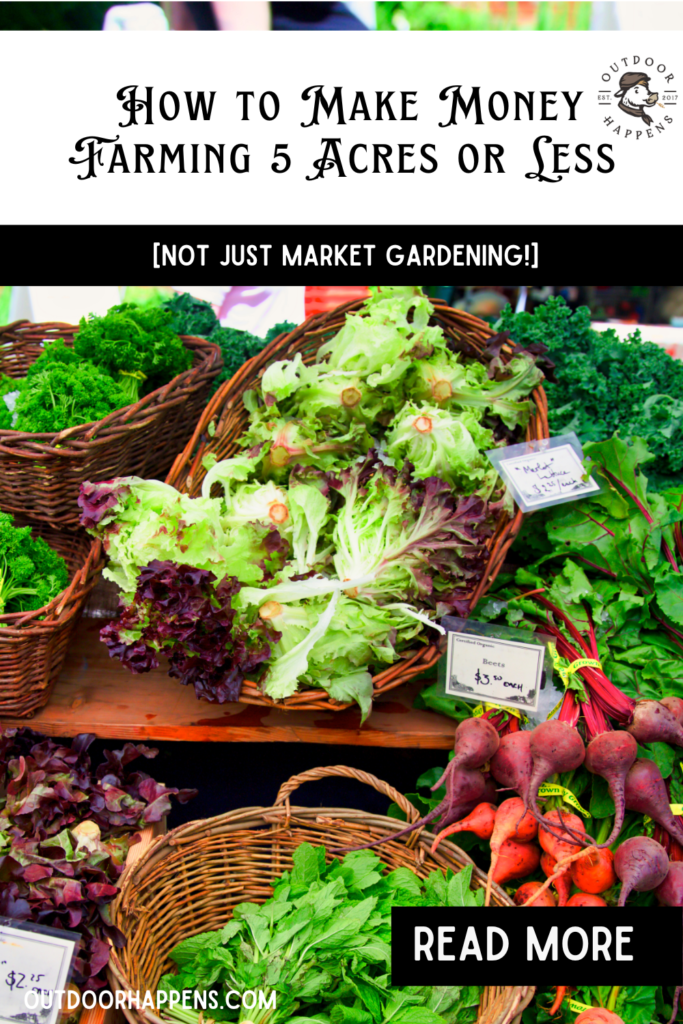


![The Most Profitable Farm Animals to Raise on Your Homestead [USA Guide]](https://69be7209.flyingcdn.com/wp-content/cache/flying-press/2SITHmiAsFk-hqdefault.webp)
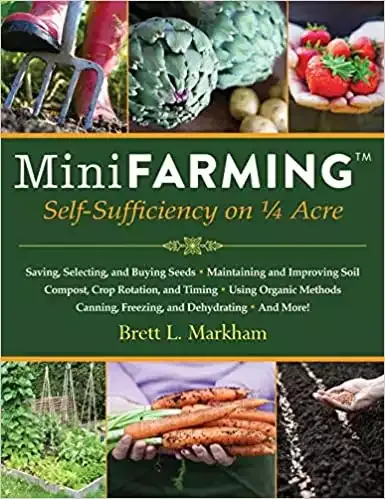
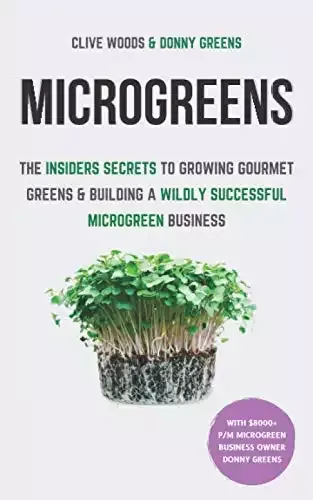

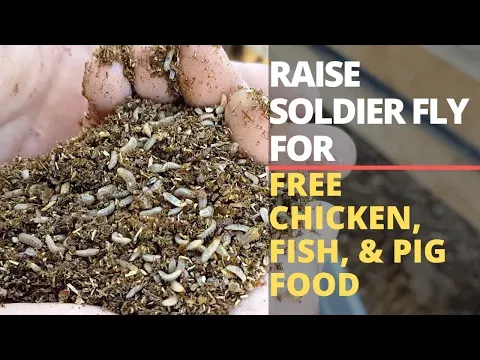

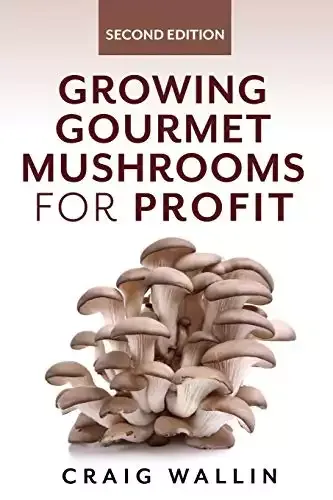

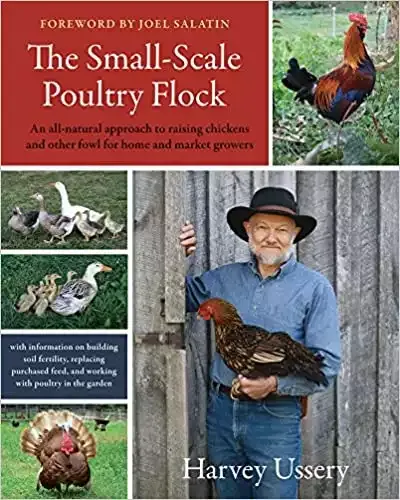
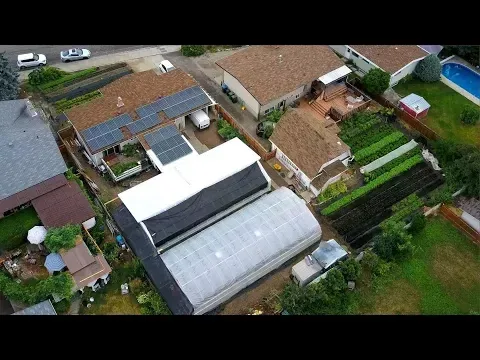
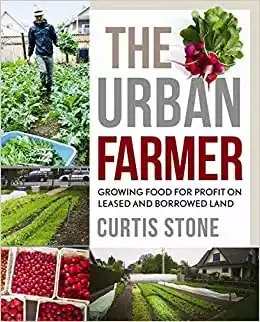
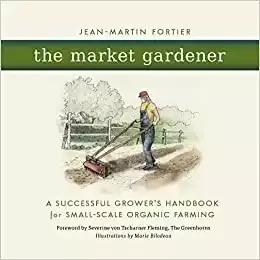
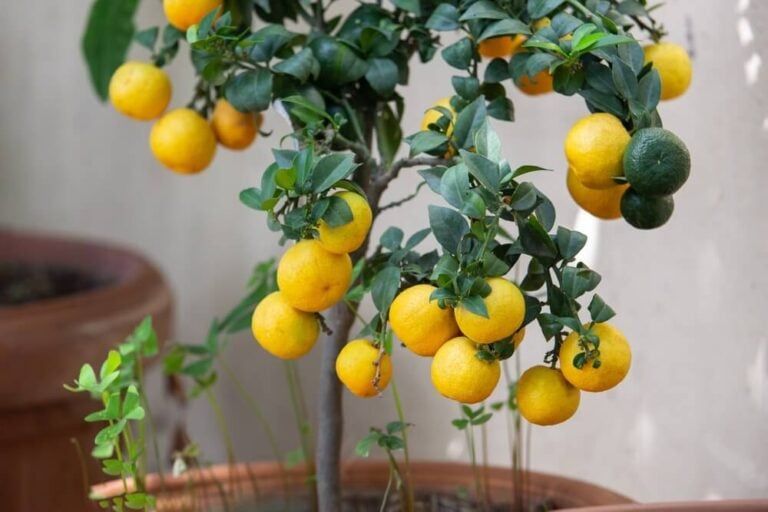

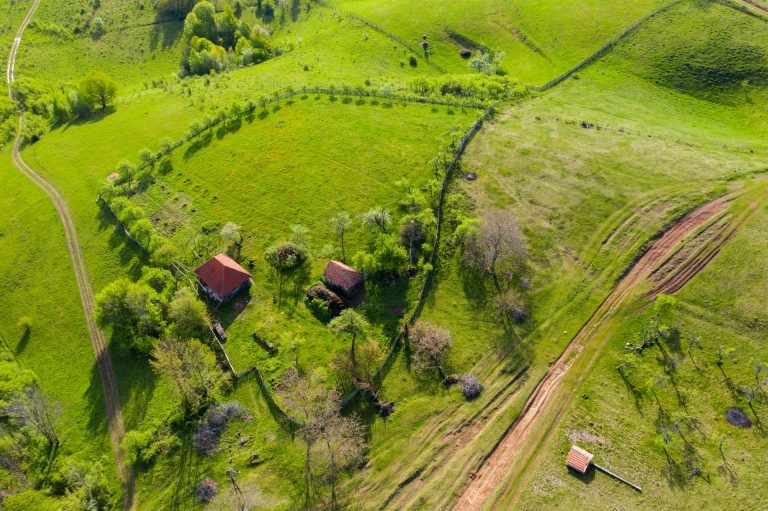
![Best Winter Hats for Men and Women [Top 29 Warmest Winter Hats]](https://69be7209.flyingcdn.com/wp-content/uploads/2022/01/bearded-man-with-warm-winter-hat-768x512.jpg)
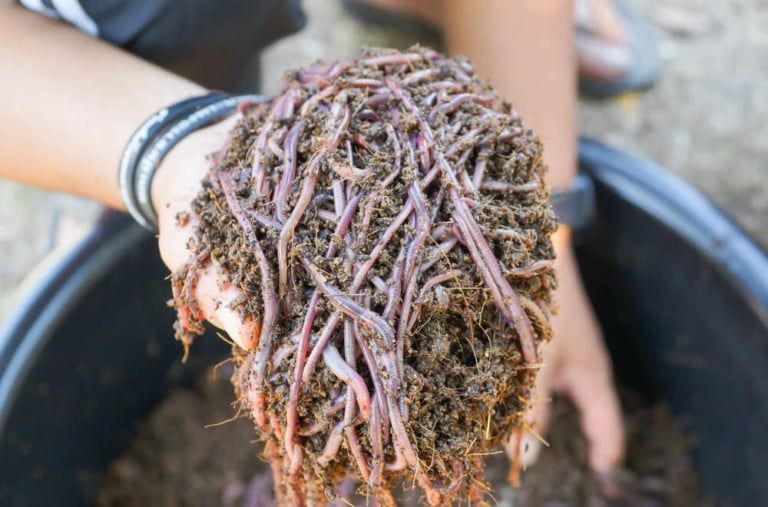
![9+ Smart Ways to Start Apartment Homesteading Today [Self-Sufficient Urban Living]](https://69be7209.flyingcdn.com/wp-content/uploads/2023/03/bright-green-indoor-apartment-garden-with-lovely-green-plants-768x510.jpg)
Are the numbers you quoted of how much money farmers made a year- are those sales or actually take away pay? $80k in sales is much different than $80k in profit.
Hi Casey!
This is a great point! Thanks for bringing it up – I’m going to check this out and add as many details as I can find into the article 😀
Appreciate it!
Your article is really great. Thanks for sharing valuable information with us.
Thanks so much Irfan, we always appreciate the feedback!
I can’t read this because of all the pop-ups that are covering the screen and I can’t close them for some reason.
Hey Scott, thanks for the heads up! I’ve made some changes and hope it’s a much better experience now. Let me know if it’s still a problem! Appreciate you reaching out,
Elle
Lemongrass is one of my favorite things to grow. There are not many other vegetables that grow as quick or as easily, and it makes a great tea!